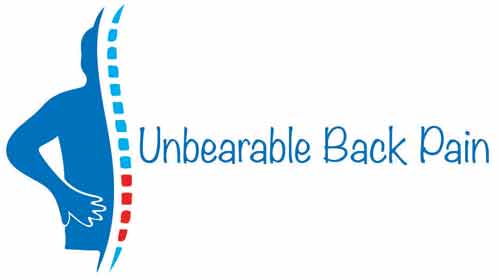 Many people think of hula hooping as a nostalgic playground activity with girls mainly participating. But these days it has evolved into a popular fitness trend with both male and female participation. As with a lot of trends, questions often come up about its safety, particularly concerning back health. Some people worry that the repetitive motion might be damaging, while others swear by its benefits.
Many people think of hula hooping as a nostalgic playground activity with girls mainly participating. But these days it has evolved into a popular fitness trend with both male and female participation. As with a lot of trends, questions often come up about its safety, particularly concerning back health. Some people worry that the repetitive motion might be damaging, while others swear by its benefits.
Your spine is a complex structure that’s incredibly resilient yet susceptible to injury. Understanding how hula hooping interacts with the spine is crucial. The spinal column has muscles and ligaments that work together to support your body as you move.
With the increase in people embracing hula hooping for exercise, it’s essential to understand how your back reacts to the motion and pressure you exert on it. If this sounds ominous, don’t panic. This activity can actually benefit your back, provided it’s approached with care and proper technique.

The Benefits of Hula Hooping for Your Back
While hula hooping can be a fun and engaging exercise, it’s important to understand how it can actively benefit your back. The rhythmic motion required to keep the hoop spinning targets your core muscles, including the abdominals, obliques, and lower back muscles. By strengthening these muscles, you provide better stability and support for your spine.
The circular movements of hula hooping also contribute to increased flexibility and range of motion, particularly in the spine and hips. Enhanced flexibility is critical in reducing the risk of back injuries, as it allows your body to handle sudden movements and stresses more effectively.
There are numerous reports from individuals who have experienced relief from chronic back pain as a result of regular hula hooping. Although more research is needed to conclusively determine the benefits, existing studies suggest that engaging in activities that strengthen core muscles can reduce discomfort and improve overall back health.
To reap these benefits, consistent practice is key. Just as with any form of exercise, the positive effects on your back from hula hooping come with regular activity. However, it’s crucial to pay attention to your body’s signals. If hula hooping causes back discomfort, it may be worth examining your technique or consulting a professional.

Potential Risks and Considerations When Hula Hooping
While the rhythmic motion of a hula hoop can serve as a fun and engaging way to strengthen core muscles, it’s important to acknowledge that any physical activity comes with potential risks if not done correctly. Hula hooping is no different, especially when it involves the delicate structures of the back.
When you hula hoop, you’re engaging in a repetitive motion that predominantly utilizes your lower back and hips. For individuals with preexisting back conditions or a history of injuries, this repetitive motion could exacerbate pain or cause new issues. Proper technique is crucial to avoid placing undue stress on the vertebral column.
The type of injuries from hula hooping largely depends on how you use the hoop. Common issues include muscle strains, particularly in the lumbar region, or aggravation of the sciatic nerve, which can lead to pain extending down the leg. Overexertion without adequate rest or improper hoop size can be contributing factors.
Knowing your own limits is paramount. If you experience any pain while hooping, it’s a signal from your body to take a pause and reassess your practice. Chronic discomfort, sharp pains, or any form of persistent backache deserve a professional’s attention.

The Rise in Popularity of Weighted Hula Hoops
You may have noticed something interesting at the park recently. More and more people are spinning away with a new fitness gadget: the weighted hula hoop. This isn’t a mere throwback to a child’s toy, it’s becoming a fitness phenomenon.
By now you will have realized this trend is about more than just fun. These aren’t the lightweight hoops from days past. They’re heavier, designed to make your workout more challenging and potentially more rewarding.
But why now? What’s with the sudden increase in popularity? I’ve done some research, and it turns out there are quite a few reasons. Social media influencers are flaunting their hoop skills and toned midsections, and by doing so are sparking curiosity. Online testimonials claim these hoops can carve out your core, boost your cardio workout, and offer a low-impact exercise option.
Sales numbers certainly confirm it, as it seems weighted hula hoops are soaring off the shelves with a sharp increase in purchases over the last year. Fitness enthusiasts are always on the lookout for the next best thing, and it seems the weighted hula hoop is the latest contender.
As a result, questions are circulating. Can spinning a weighted hoop around your waist really make a difference in your fitness routine? Does this dynamic twist on an age-old activity provide the results that people are looking for in terms of fitness and weight loss? And importantly, is it a safe choice for everyone, including those with physical concerns like bad backs?
If you are already a sufferer from a bad back then it is essential that you check with a medical professional before doing something that you may regret. Assuming you get the go ahead, then it is also wise to choose a hoop that allows you to adjust the weight. Start with a lighter weight, then work your way up. But if you start to feel pain, stop and revert to the previous weight.

Best Practices for Safe Hula Hooping
I cannot stress enough the importance of a good warm-up. Before you start hula hooping, you should engage in stretching or light aerobic activity to wake up those muscles. This could save you from a lot of discomfort.
Next, let’s talk about your tools – the hula hoop itself. As suggested, a heavier hoop can offer more control and a better workout for your core, but be careful not to go too heavy as this could strain your back. And size matters too. Make sure the hoop reaches somewhere between your waist and mid-chest when it’s standing upright in front of you.
A hoop when used correctly can make all the difference. Keep your movements smooth and controlled. Swaying too vigorously or using poor form can jar your spine, leading to pain or injury.
In summary, hula hooping can be a fun and beneficial workout for your back when done right. Pay attention to your body’s signals. If you feel any discomfort or pain, take a break and reassess your technique. With the right approach, you might just find hula hooping to be the enjoyable backbone of your fitness routine.
While hula hooping can be a fun and effective exercise, it’s essential to consider its impact on your back health. For those concerned about potential strain, the Smart Weighted Hula Hoop by K-Mart offers a user-friendly design that stays in place and doesn’t fall, making it suitable for individuals with varying fitness levels.
This 2-in-1 fitness and massage hula hoop features soft rubber massage heads and magnetic therapy disks that deeply massage muscles, aiding in fat burning and relieving fatigue. It’s particularly beneficial for postpartum individuals or those with lower fitness levels.
The hoop’s removable design allows for easy disassembly by pressing a button, enabling customization to fit your waist circumference. It can be adjusted from 15 to 27 parts for a perfect fit, ensuring comfort during your workout.
Incorporating this smart hula hoop into your fitness routine can provide a low-impact workout that strengthens your core muscles and promotes overall back health.

As always, consult with a healthcare professional before starting any new exercise regimen, especially if you have pre-existing back conditions.
“Here’s a little transparency: Our website contains affiliate links. This means we may receive a small commission if you click and purchase. Don’t worry, there’s no extra cost to you. It’s a simple way you can support our mission to bring you quality back relief content.”

